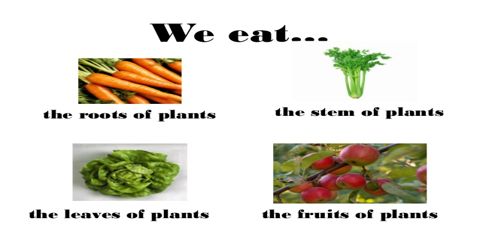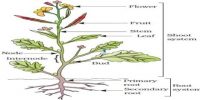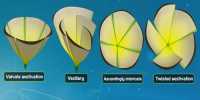Importance of Root, Stem, and Leaf in Human Life
We are dependent on plants in many ways. Plants provide many products for human use. Plants provide us with food, clothes, house building materials, medicine, etc.
Plants provide homes for many other living things. They include timber, medicines, dyes, oils, and rubber. The stuff that we get from animals is also indirectly contributed by plants. For example, a single tree may provide food and shelter to many species of animals.
(a) Uses of roots:
The roots of radish, carrot, turnip, etc. are used as delicious vegetables Costly medicine is extracted from the roots of satomuli, sarpagandha, etc. Roots have specialized parts that develop from the three major types of plant tissue: ground, dermal, and vascular. They act like straws absorbing water and minerals from the soil.
The role of the root is to absorb water and minerals from the soil. Roots anchor a plant and extract nutrients and water from the soil so the plant can grow. They help to anchor the plant in the soil so it does not fall over. They also, store extra food for future use.
(b) Uses of stems:
Soft stem of herbs is used as food. We eat ginger, potato, Basella stem (Pawn Data) and arum stem as vegetables and spices. Date and sugarcane stems are used to prepare delicious as well as nutritious drinks. House building materials and furniture are made of wood. We get timber from large stems. The fiber obtained from jute and hemp stems is used in making ropes, sacs, clothes, etc. Stem growth can add to the plant’s height, broaden the area covered by the leaves, or even direct growth from a dark area toward one with more light.
The purpose of the stem is to maintain the plant. They act like the plant’s plumbing system, conducting water and nutrients from the roots and food in the form of glucose from the leaves to other plant parts. They carry nutrients and water to the leaves and flowers by capillary action.
(c) Uses of leaves:
We have different kinds of leafy vegetables including bottle gourd leaf, basilla, red leaf, spinach, Jute leaf, kalmni leaf in our daily meals. Fibers are obtained from palm, banana and pineapple leaves. Different luxury items are made of these fibers. You must have seen roofs made of palm leaves. Cigarettes are manufactured from tobacco leaves. Which are injurious for health. Beautiful mats are made of date leaves. Most of you have used fans made of palm leaves. Valuable medicine is also extracted from basak, nisinda, kurchi, thankuni, Marigold leaves.
The role of the leaf is to organize food by photosynthesis and allocate it for all the parts of the plant. Most plants’ food is made in their leaves. Leaves take in sunlight and adapt it to energy so that the flowers can bloom and be pollinated, then expand seeds for the subsequent production of plants and in that way the plant uses to formulate food through a procedure called photosynthesis.














